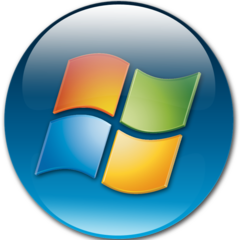-
Posts
38 -
Joined
-
Last visited
Awards
This user doesn't have any awards
Contact Methods
-
Twitch.tv
twitch.tv/Rhylor
Profile Information
-
Gender
Male
-
Location
Arizona
-
Interests
Computer Science, Physics, HiFi Audio
System
-
CPU
Core 2 Duo T7200 @ 2.00 GHz
-
Motherboard
Dell 0MG248
-
RAM
4 GB DDR2 800 MHz
-
GPU
Intel Mobile 945GM
-
Case
Dell XPS M1210 Laptop
-
Storage
ADATA 60 GB SSD
-
Sound
Onboard Sound --> Takstar HI2050 Headphones
-
Operating System
Arch Linux
Recent Profile Visitors
726 profile views
Tallix's Achievements
-
You said you might be able to user Windows Server or Linux to make this EVEN FASTER. Yes, please. Additionally, I would argue that you should do this on Linux since most consumers and enthusiasts could get their hands on a Linux distro pretty easily for free, whereas Windows Server costs some extra cash (or a lot of extra cash), and part of the point was to save money.
- 29 replies
-
- cheap
- networking
- (and 4 more)
-
I'll put in my vote for Ars as well. Great site.
-
I'm not going to claim to be an expert on cable management, but why on earth would you allow cables to be strewn across the entrance to your workspace??? Also, is that a multimeter just sitting on the ground?
-
I would probably give mine about a 3 out of ten. A quick tour: to the left, you'll see my 10 year old laptop (specs in profile if you really want them). At the center you'll find a 1080p monitor connected via VGA from my abysmal GMA945M, which shouldn't be possible. Finally, on the right is a pile of mail. I'm pretty new to this whole "receiving mail" business. Most of it should probably be thrown out or shredded, but I feel like I need to keep it for some reason... Cable management is awful, as you can see. Other than that, my desk is usually littered with various pieces of Calculus scratch work. In this picture, as a bonus, there's a printout of some Arduino code: I sometimes eat at my desk, but as a general rule I always clean up the dishes right away. Having food at a desk for too long is just begging for a disaster, plus it's kind of gross.
-

haven't heard of linux since i subscribed to LTT
Tallix replied to BCM3152's topic in Linux, macOS and Everything Not-Windows
It's unfortunate to hear that you won't be trying out Linux, but if you ever do, here's my 2 cents: Linux has basically taught me everything I know about computers. I started off using Ubuntu and got sick of it after about a year. I somehow managed to switch straight from Ubuntu to Arch. It was hard to figure things out in the beginning, but now I'll never go back. Arch has taught me about hardware, programming, and (most of all) the Linux OS itself, and, by extension, how operating systems work in general. I appreciate my knowledge now so much more than I ever would have been able to if I had just kept using Windows my whole life, because Windows doesn't allow you to observe the elegance of the system itself. If you ever do want to try Linux, I would recommend starting out with Linux Mint. You can install it alongside Windows (your computer will be able to boot up into either Windows or Mint, and you can choose between the two every time you turn your computer on), and the Mint installer makes it very easy to do this (you literally just have to check a box). At any rate, nice question! I hope you got the answers you needed -
Something nobody has brought up yet is that Windows relies on certain files being in certain places on your boot disk (a mediocre design at best, but it is what it is). Therefore, simply removing the Ubuntu partitions and expanding the Windows partitions may not work. It would be wisest to just do a completely clean install of Windows on the SSD. In addition, the GRUB bootloader overwrites the MBR when it is installed. I don't know what Windows needs in the MBR to work, but it's not there anymore. GRUB will continue to work and allow you to boot into Windows as long as you have Linux installed so that GRUB can look at a config file on the Linux file system.
- 13 replies
-

Can I run Linux/Ubuntu in browser?
Tallix replied to doeskydoes's topic in Linux, macOS and Everything Not-Windows
The short answer to your question is no. The problem is that a browser is really, really not meant to be a hypervisor of any sort. Ubuntu has its weird web demo thing with a working version of Firefox, but it's severely limited. There are a few ways that you can get other operating systems running on Chromebooks, but they're all rather hackish and come with the possiblity of breaking your system. One of these methods is Crouton, which basically leverages the fact that Chrome OS is Linux under the hood and runs a guest operating system in what's called a chroot. Another method involves custom firmware that you can flash onto your Chromebook called SeaBIOS, but that's a bit risky if you ask me. If you're interested in taking the plunge, just do a little Googling. There are lots of great guides floating around. -
AskUbuntu tends to be a bit more lenient about grammar than most Linux help forums. Now, if you seek help on Ubuntu Forums proper, then you will have to take care to communicate as clearly as possible (which you should always do anyway). At any rate, AskUbuntu is probably a better place to ask than here, since there are many more Ubuntu experts browsing that forum. HOWEVER!! Asking questions that have already been answered elsewhere is greatly looked down upon in the Linux community. Make sure that before you ask anything, do some Google searching. Make sure to include things like the software and hardware you're using, the fact that you're using Ubuntu, etc.
-
Have you tried plugging your graphics card into a different PCIe slot?
- 20 replies
-
- dell
- dell up2414q
- (and 8 more)
-
The professional malware developer Hacking Team has recently leaked a Flash security exploit that was able to get around even Google Chrome's advanced security, piercing the sandbox and accessing the system at large: Ars Technica - Hacking Team's Flash 0-day: Potent enough to infect actual Chrome user Adobe has recently patched this security issue in their upstream version of Adobe Flash and Google has patched the vulnerability in Chrome's in-built implementation of Flash, called Pepper. However, it doesn't just end there. Days later, two more 0-day attacks developed by Hacking Team were discovered: Ars Technica - Once again, Adobe releases emergency Flash patch for Hacking Team 0-days Some parties have considered these issues so serious that they are doing away with Flash altogether. Mozilla has blacklisted the plugin in their popular Firefox browser and at least one PC manufacturer will no longer distribute their machines with Flash pre-installed, urging preexisting users to purge Flash from their system. Ars Technica - Firefox blacklists Flash player due to unpatched 0-day vulnerabilities Ars Technica - Ubuntu PC Maker System76 abandons Flash, says it's too dangerous Some, including major parties such as Facebook, have called for an end to Flash's life on the web altogether. These demands are further legitimized by the existence of other technologies, such as HTML5, that are also able to provide a rich web experience as well as the declining popularity of Flash.
-
So it sounds like the RAM and PSU he bought should be reliable. Have you updated the BIOS/UEFI? Another thing I thought of: does he have all of the appropriate device drivers installed in his OS? Perhaps he could try a fresh OS install? If you find out from tests that the PSU is causing the problem, you can always RMA it.
-
Some things to try: Updating the BIOS/UEFI Using another set of RAM from a reputable manufacturer (perhaps do some tests using yours) Using a different PSU, again from a reputable manufacturer It's important to always use high-quality parts, and if you don't then this is often what happens. Now maybe I'm being to quick to judge (since you haven't listed all of your friend's specs), but it sounds like there is some low-quality part in his system (probably RAM or PSU) that is giving him trouble.
-
I am also wondering why Linus has chosen to run Windows on this machine... from what I've heard from just about every industry expert ever, running a Windows server is a surefire way to run into issues. Clearly, there is no inability to run a server-grade OS, as one of the recent server videos mentioned that the giant backup server was going to be running a BSD-based solution, so why is this server not going to be running a truly server-grade OS?
- 53 replies
-

Kernel Failure when only playing WoW. Switched almost every part
Tallix replied to FrankTheTank5's topic in Troubleshooting
Good to hear -
Follow the instructions on this page and then boot from the flash drive you have created: http://www.ubuntu.com/download/desktop/create-a-usb-stick-on-windows After booting, it should be relatively self-explanatory to get to the files and save them elsewhere, or even upload them to a cloud backup service like MEGA (the flash drive should include Firefox). If you're going to save the files to some external device, make sure you save them to another one besides the bootable USB flash drive, because the bootable flash drive will erase any changes to the storage on shutdown.





.png)

